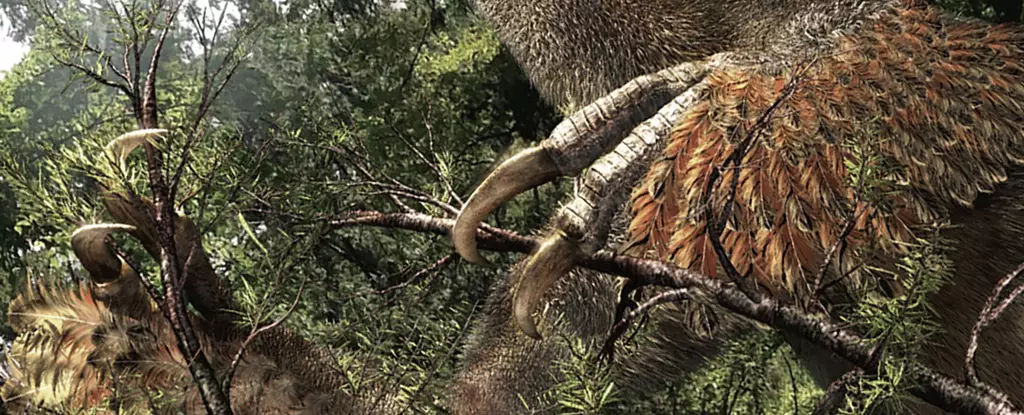In a groundbreaking discovery that has sent ripples through the paleontological community, researchers have unveiled a fascinating new dinosaur species named Duonychus tsogtbaatari, known for its unconventional two-fingered structure and astonishing claws. This feathered, bipedal dinosaur found in southeastern Mongolia challenges our previous understanding of theropod evolution, highlighting the plasticity of skeletal forms in response to ecological pressures. The fossil, dug from the Cretaceous layers of the Gobi Desert in 2012, with its remarkably preserved features, serves not only as a window into ancient life but as a bold reminder that nature often defies expectations.
The Curious Anatomy of Duonychus
Duonychus tsogtbaatari, which translates to “two claws,” is more than just a catchy name; it’s a nomenclature that raises questions about functionality and adaptability. Unlike its therizinosaur brethren, which typically sport three fingers, this extraordinary dinosaur showcases a unique evolutionary path. Its sizable claws, measuring an impressive 30 centimeters, are not merely tools for grasping but might have served various purposes, from foraging to signaling in social interactions. What do these adaptations mean for our understanding of theropod behavior? The two-fingered structure might not be a sign of degeneration, as traditional logic suggests, but rather an innovative adaptation that enhanced Duonychus’s ability to thrive in its environment.
A Breach in Conventional Wisdom
The revelation that Duonychus had only two fingers defies the established notion that functionality and evolutionary convergence always lead to the retention of certain traits. Among theropods, a lineage famously known for its predatory adaptations, such variations raise eyebrows. The rarity of reduced digits among similar species challenges the historical narrative that fewer fingers equate to a less effective grasping capability. Initially, it might appear that evolution played a cruel trick on this dinosaur, but further scrutiny suggests that Duonychus, much like the rest of us, adapted to the demands of its specific ecological niche.
Ecology Meets Evolution
Understanding the ecological context of Duonychus’s adaptations is critical. Researchers speculate that its unique claws and limb structure may have been pivotal for grasping and manipulating vegetation, likening its feeding mechanism to that of modern sloths and chameleons. Imagine this dinosaur, not as a ruthless predator but as a hungry forager carefully grasping leaves, pulling them toward its mouth with precision. This duality in its nature—being both an herbivore and a potential omnivore—invites us to rethink how we categorize ancient life forms and their behaviors. The study suggests these adaptations not only facilitated feeding but might have been integral to its survival in a competitive ecosystem riddled with herbivorous rivals and predator threats.
Fossilization: A Rare Window of Opportunity
One of the standout achievements of the Duonychus tsogtbaatari discovery is the remarkable preservation of its keratin sheaths, an aspect rarely found in fossil records. Traditional fossils typically reveal only the bone structures, leaving a considerable gap in our understanding of how dinosaurs operated in their environments. The keratin sheaths found in this specimen afford scientists an unprecedented view into the physical attributes that gave the dinosaur its distinctive identity, saving it from being just another number in the annals of history.
Implications for Understanding Therizinosaurs
Duonychus’s discovery is pivotal not only in highlighting its unique anatomy but also in reshaping our broader understanding of therizinosaurs. This finding has significant implications, suggesting that the evolution of physical traits in theropods may not follow a linear path, challenging our past assumptions of evolutionary development as a simple, straightforward narrative. The idea that notable adaptations can arise even amidst established lineages opens doors for speculation about the potential capabilities and behaviors of other prehistoric creatures, shaping future paleontological studies.
In essence, the two-fingered Duonychus tsogtbaatari serves as a rich canvas for exploring the complexities of evolution and adaptation. It’s a powerful reminder that the narrative of evolution is not merely a story written in stone but one that embodies life’s capacity for innovation in the face of ever-shifting environmental landscapes.


Leave a Reply